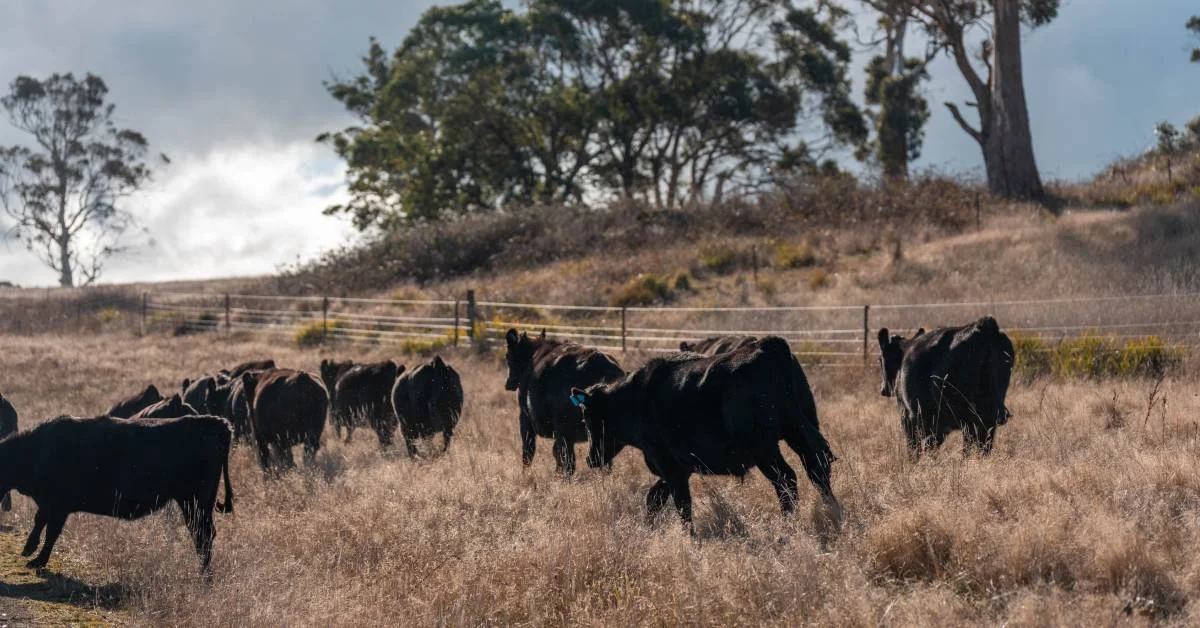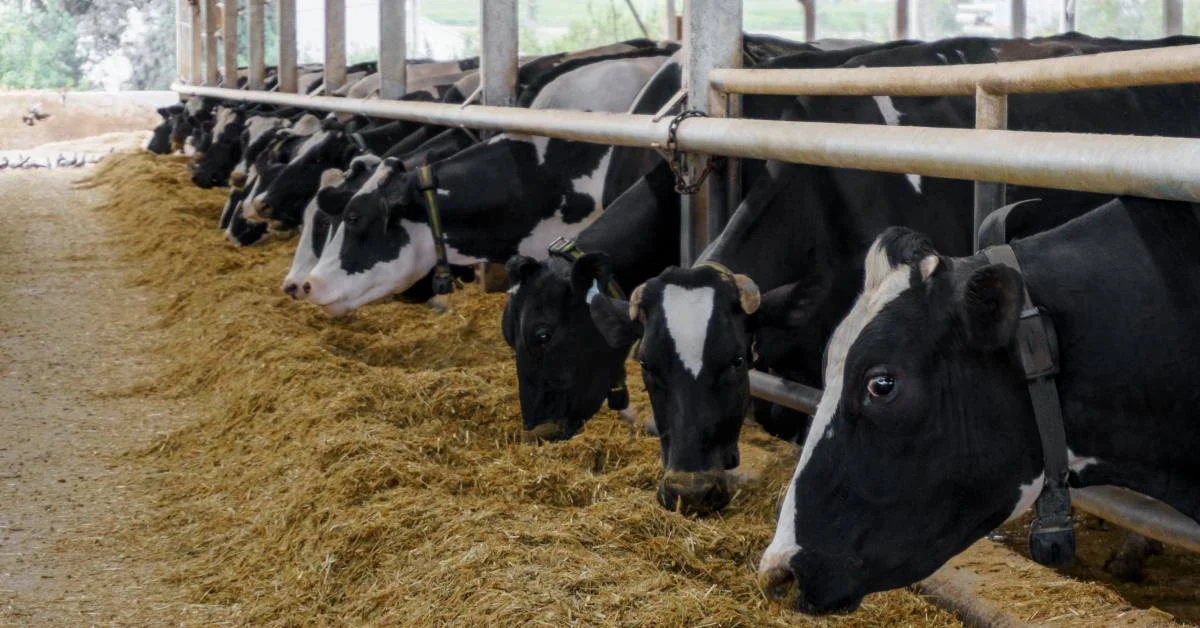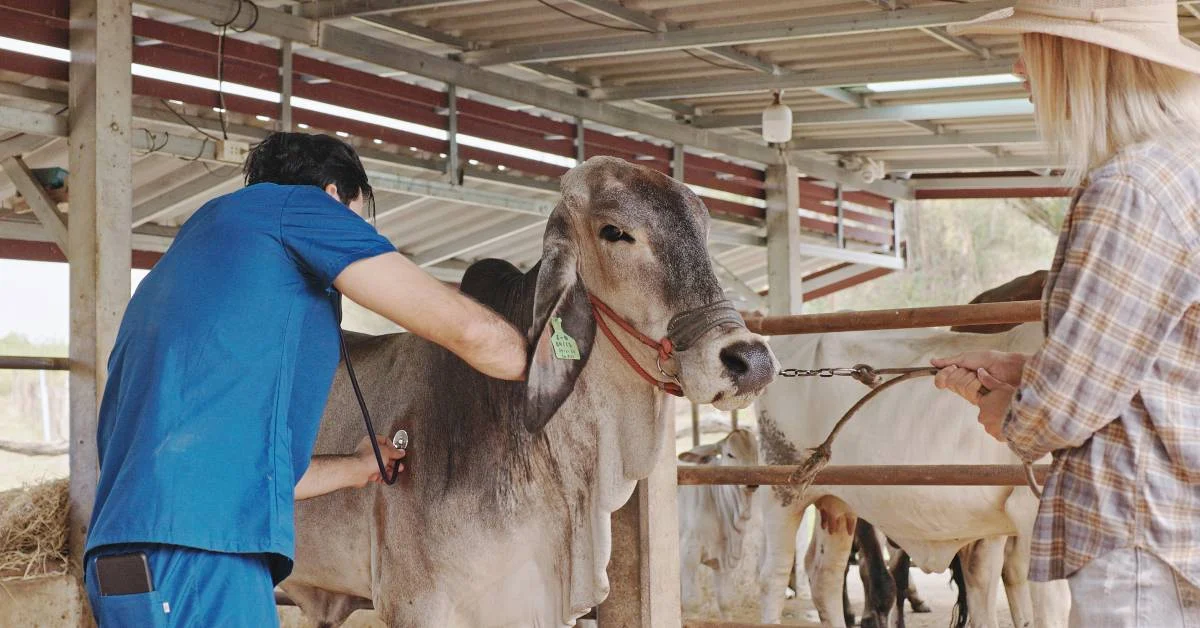The agricultural sector is undergoing a technological revolution, and one aspect of this change is the implementation of IoT (Internet of Things) sensors in livestock monitoring.
These advanced systems transform traditional farming practices, offering farmers unprecedented insights into animal health, behavior, and environmental conditions.
In this blog, we’ll explore the future of livestock sensor monitoring through IoT sensors, focusing on a cutting-edge telemetry application designed to capture and analyze real-time data from farms.
What is IoT in Agriculture?
The Internet of Things (IoT) is a network of physical devices, vehicles, home appliances, and other items embedded with electronics, software, sensors, actuators, and connectivity, which enables these objects to connect and exchange data.
IoT has emerged as a transformative technology in agriculture, revolutionizing farming practices. While IoT is relatively new, its application in agriculture builds upon decades of technological advancements in precision agriculture, remote sensing, and automation.
Early forms of IoT in agriculture included simple sensors for monitoring weather conditions and soil moisture. However, with rapid advancements in electronics, wireless communication, and data analytics, IoT has evolved into a sophisticated tool for managing complex agricultural operations. To support this shift, many farms are turning to IT procurement services to ensure they deploy the right hardware and software infrastructure efficiently.
IoT is used across various agriculture sectors, including crop production, livestock sensor management, and the supply chain. Farmers are leveraging IoT devices to monitor soil conditions, optimize irrigation, track livestock health, and control equipment remotely. The data collected from these devices is used to make informed decisions, improve efficiency, and increase yields.
Understanding IoT Sensors in Livestock Monitoring
IoT sensors are compact, interconnected devices that gather and transmit data. In livestock sensor monitoring, these sensors are typically installed on farms and integrated into various structures such as feeding stations, watering troughs, and weighing scales. The sensors collect data on multiple parameters, including:
- Animal Weight: Monitoring weight changes to ensure proper growth and detect health issues.
- RFID Tags: Identifying individual animals and tracking their movements and behaviors.
- Feeding and Drinking Patterns: Measuring food and water intake to ensure animals are consuming enough nutrients.
Key Livestock Sensors Used in Monitoring
IoT sensors have become indispensable tools for modern livestock sensor management. By collecting and transmitting data in real-time, these sensors provide invaluable insights into animal health, behavior, and environmental conditions.
Temperature Sensors
Temperature sensors are essential for monitoring both animal and environmental conditions.
- Animal body temperature: Farmers can detect potential health issues such as infections or heat stress by tracking core body temperature.
- Ambient temperature: Monitoring barn or pasture temperature helps maintain optimal living conditions for livestock.
GPS Tracking Devices
GPS technology enables precise location tracking of livestock. This information is crucial for:
- Geofencing: Creating virtual boundaries to monitor animal movement and prevent escapes.
- Pasture management: Optimizing grazing patterns and preventing overgrazing.
- Heat detection: Identifying animals in estrus based on movement patterns.
Environmental Sensors
Environmental sensors provide data on various factors affecting livestock sensor well-being:
- Humidity: Monitoring humidity levels helps prevent respiratory problems and ensures optimal living conditions.
- Air quality: Detecting harmful gasses or pollutants can protect animal health and productivity.
- Light intensity: Measuring light levels helps regulate animal behavior and optimize lighting conditions.
Challenges and Solutions in Implementing Livestock Sensor
While IoT sensors offer immense potential for improving livestock sensor management, farmers often encounter various obstacles when adopting this technology.
Common Challenges
- Initial Investment: The cost of purchasing and installing sensors and the necessary infrastructure can be significant.
- Data Management: Collecting vast amounts of data requires efficient storage and analysis capabilities, which can be challenging for farmers with limited technical expertise.
- Connectivity Issues: Reliable internet connectivity is essential for effective data transmission, especially in rural areas.
- Sensor Durability: Sensors must withstand harsh agricultural environments, including extreme weather conditions, dust, and potential animal damage.
- Battery Life: Sensors often rely on batteries, which require regular replacement or recharging, adding to maintenance costs and labor.
- Data Interpretation: Converting raw data into actionable insights requires specialized knowledge and skills.
- Privacy and Security: Protecting sensitive data related to animals and farm operations is crucial.
Strategies to Overcome Challenges
- Government Subsidies: Encouraging government support for IoT adoption can reduce initial costs.
- Data Management Solutions: Partnering with service providers that offer cloud-based data storage and analysis can simplify data management.
- Hybrid Connectivity: Combining cellular, satellite, and low-power wide-area networks (LPWAN) can improve connectivity in rural areas.
- Robust Sensor Design: Investing in high-quality, durable sensors can minimize maintenance and replacement costs.
- Battery Optimization: Exploring alternative power sources, such as solar or wind energy, can extend battery life.
- Data Analysis Services: Collaborating with experts in data science can help farmers extract valuable insights from their data.
- Cybersecurity Measures: Implementing robust security protocols to protect sensitive information is essential. This can avoid the majority of cybersecurity threats like identity theft, phishing and more.
How Does Our Telemetry Application Work?
Our telemetry application leverages IoT sensors to provide a detailed and informative monitoring solution. Here’s a thorough overview of how it functions:
1. Data Collection
IoT sensors installed on the farm send data every second. This data includes animal-related information such as weight, RFID tags, feeding/drinking activity, and hardware performance metrics like sensor temperature and packet transmission rates.
2. Hexadecimal Packet Translation
The raw data from the sensors arrives in hexadecimal format. Our application translates these packets into readable data, then stored in a local database. This step is crucial, especially in environments with unstable internet connectivity, as it ensures no data is lost.
3. Real-Time Visualization
The locally stored data generates real-time graphs and system health checks, including connected IoT devices. For instance, when an animal steps onto a scale, its RFID is displayed in real-time, confirming its identity.
Farmers and administrators can view real-time statistics on animal health, feed or water consumption, animal activities, and hardware performance through our role-based web application hosted on the Web.
4. Data Syncing and Cloud Integration
Given the constraints of unstable internet connectivity on farms, our application maintains a local dataset for up to a month.
ETL (Extract, Transform, Load) A syncing service periodically transfers this data to cloud databases and clusters, where ETL (Extract, Transform, Load) jobs process and archive it for historical analysis.
5. Historical Analysis and Reporting
The cloud-stored data generates detailed historical statistics. Our web application provides comprehensive dashboards, allowing users to track long-term trends, gain user behaviour insights, and make informed decisions based on historical data.
Why Should You Integrate IoT Sensors in Livestock?

The integration of IoT sensors in livestock sensor monitoring offers numerous benefits:
- Enhanced Animal Health Monitoring: Continuous tracking of weight and feeding patterns helps detect health issues early, enabling timely interventions.
- Improved Farm Management: Real-time data allows for better resource allocation and farm management, optimizing feeding schedules and improving overall efficiency.
- Data-Driven Decisions: Data analytics in agriculture provides insights into long-term trends, helping farmers make informed decisions about breeding, nutrition, and overall farm management.
- Cost Savings: Early detection of health issues and efficient resource management reduce costs and increase profitability.
Cost-Benefit Analysis of Livestock Sensor Implementation
Implementing livestock sensor technology involves several cost components:
- Hardware costs: This includes the purchase of sensors, gateways, and other necessary equipment.
- Installation costs: Labor costs for installing sensors, configuring networks, and integrating with existing systems.
- Software costs: Expenses for data management, analysis, and visualization platforms.
- Connectivity costs: Costs associated with data transmission, including cellular or satellite plans.
- Maintenance costs: Regular upkeep, battery replacements, and sensor repairs.
- Labor costs: Additional labor for data analysis and interpretation.
- Consulting fees: Potential costs for hiring experts to design and implement the system.
Analysis of Long-Term Financial Benefits
While the initial investment in livestock sensors can be substantial, the long-term benefits can outweigh the costs. Potential financial gains include:
- Improved animal health: Early detection of diseases and health issues can reduce treatment costs and prevent losses.
- Enhanced reproductive efficiency: Optimizing breeding cycles and identifying reproductive issues can increase herd productivity.
- Optimized feed management: Monitoring feed intake and animal weight can prevent overfeeding or underfeeding, leading to cost savings.
- Reduced labor costs: Data collection and analysis automation can free up labor for other tasks.
- Increased revenue: Improved animal health, productivity, and efficiency can increase income.
- Risk mitigation: Early detection of potential problems can help prevent significant losses.
It’s important to note that the cost-benefit analysis will vary depending on factors such as the size of the livestock operation, the specific sensors used, and the efficiency of the implementation. To accurately assess the financial impact of livestock sensors, it’s recommended to conduct a thorough analysis, including:
- Return on investment (ROI) calculation: Comparing the system’s total cost to the expected financial benefits.
- Break-even analysis: Determining the time required to recoup the initial investment.
- Sensitivity analysis: Evaluates how changes in variables, such as sensor costs or animal prices, affect overall profitability.
Future Innovations in Livestock Sensor Technology for Monitoring
Integrating these emerging technologies will transform livestock sensor management, enabling farmers to make more informed decisions, improve animal health and welfare, and increase productivity while reducing environmental impact.
Emerging Sensor Technologies
The livestock industry is poised for significant advancements with the development of new sensor technologies:
- Wearable sensors: These devices can be attached to animals to monitor various parameters, such as heart rate, respiration, activity levels, and even rumen function.
- Biomarkers: Sensors that detect specific biomarkers in animal fluids or tissues can provide early warning signs of diseases or metabolic disorders.
- Implantable sensors: These devices can be surgically implanted to monitor internal conditions, such as body temperature, heart rate, and reproductive status.
- Image-based sensors: Advanced cameras and image analysis techniques can assess animal behavior, detect lameness, and monitor feed intake.
Potential Future Applications and Their Impact on the Industry
- Predictive analytics: By combining sensor data with AI, it will be possible to predict disease outbreaks, optimize breeding programs, and anticipate animal behavior.
- Animal welfare: Real-time monitoring of animal behavior and physiological parameters can improve animal welfare by detecting stress, pain, or discomfort.
- Precision feeding: Sensors can monitor individual animal nutrient requirements, enabling customized feeding plans to optimize growth and production.
- Drug delivery: Implantable sensors could deliver medication or vaccines based on real-time health data.
- Traceability: Advanced sensor systems can enhance food safety and traceability by tracking animals from birth to slaughter.
How to Choose the Right Livestock Sensor for Your Farm?
Selecting the appropriate livestock sensor is crucial for maximizing the benefits of IoT technology. Several factors should be considered when making a decision:
Criteria for Selecting Appropriate Sensors
- Specific needs: Identify the primary goals of your sensor implementation (e.g., animal health monitoring, environmental control, feed management).
- Animal type: Different livestock species have unique requirements, so choose sensors accordingly (e.g., temperature sensors for poultry, GPS trackers for cattle).
- Sensor accuracy: Ensure sensors provide reliable and precise data for accurate decision-making.
- Durability: Sensors must withstand harsh farm environments, including dust, moisture, and extreme temperatures.
- Battery life: Consider the battery life of sensors to minimize maintenance and costs.
- Cost-effectiveness: Evaluate the initial and ongoing costs of sensors, including installation and data management.
- Compatibility: Ensure sensors can integrate seamlessly with your existing farm management systems.
Tips for Integrating Sensors into Existing Farm Infrastructure
- Start small: Begin with a pilot project to test the effectiveness of sensors and identify potential challenges.
- Choose user-friendly systems: Opt for sensors and software with intuitive interfaces for easy adoption by farm staff.
- Data security: Implement robust security measures to protect sensitive animal and farm data.
- Regular maintenance: Establish a maintenance schedule for sensors to ensure optimal performance.
- Training: Provide comprehensive training to farm staff on sensor operation and data interpretation.
- Continuous evaluation: Regularly assess the performance of sensors and make adjustments as needed.
Impact of Livestock Sensors on Animal Welfare
Livestock sensors are pivotal in enhancing animal welfare by providing real-time data on various parameters that impact animal health and comfort.
How Sensors Contribute to Better Animal Care
- Early disease detection: Sensors can monitor vital signs, such as temperature, heart rate, and respiration, allowing for early detection of illnesses. This enables timely intervention, reducing suffering, and mortality rates and maintaining cattle health.
- Pain management: Sensors can help identify animals in pain or distress by tracking animal behavior and physiological responses. This information allows for targeted pain management and improved recovery.
- Stress reduction: Sensors can monitor environmental factors like temperature, humidity, and noise levels, helping to create optimal living conditions that reduce stress.
- Improved nutrition: Sensors can track feed intake and weight to help prevent malnutrition or overfeeding, leading to healthier animals.
- Optimized housing: Sensor data can maximize barn layout, ventilation, and lighting, creating a more comfortable environment for livestock.
Examples of Improved Welfare Outcomes Due to Sensor Data
- Reduced lameness: By detecting early signs of lameness through gait analysis, farmers can take proactive measures to prevent further injury and improve animal comfort.
- Improved heat stress management: Sensors can monitor animal body temperature and environmental conditions to prevent heat-related illnesses and deaths.
- Enhanced reproductive health: By tracking estrus cycles and detecting reproductive issues early, farmers can optimize breeding programs and reduce animal stress.
- Optimized social interactions: Sensors can monitor animal behavior to identify social hierarchies and prevent bullying or aggression.
Integrating IoT Data with Farm Management Software
Integrating IoT data with farm management software creates a powerful synergy that drives operational efficiency and informed decision-making. Key benefits include:
- Comprehensive data analysis: Combining data from various sources provides a holistic view of farm operations, enabling more profound insights and accurate predictions.
- Improved decision-making: Farmers can make data-driven decisions to optimize resource allocation and increase profitability by correlating IoT data with historical and financial information.
- Enhanced automation: Integrating IoT data with automation systems enables precise control of equipment and processes, reducing labor costs and improving efficiency.
- Risk mitigation: Farmers can proactively address potential issues by monitoring livestock health, weather conditions, and equipment performance.
- Compliance and traceability: Integrating data from various sources can help farmers meet regulatory compliance and track product provenance.
Steps to Integrate and Streamline Data Flow
- Data Standardization: Establish standard data formats and units of measurement to ensure compatibility between IoT data and farm management software.
- Data Cleaning and Validation: Cleanse IoT data to remove errors, inconsistencies, and outliers before integration.
- Data Integration: Utilize APIs or data connectors to establish a seamless data flow between IoT devices and farm management software.
- Data Transformation: Convert IoT data into a format compatible with the farm management software’s database structure.
- Data Storage and Management: Establish a robust data storage and management system to handle the increased volume of data.
- Data Visualization: Create informative dashboards and reports to visualize IoT data alongside other farm management information.
- Continuous Monitoring and Optimization: Regularly assess the integration process and adjust to improve data quality and usability.
Conclusion
Integrating IoT sensors in livestock sensor monitoring represents a significant leap forward for the agricultural sector. Our telemetry application showcases the potential of these technologies, providing farmers and stakeholders with real-time insights and detailed historical data to enhance farm management and animal health.
As technology continues to evolve, the future of livestock sensor monitoring will undoubtedly bring even more innovative solutions, driving the industry toward greater efficiency and sustainability. By embracing these advancements, farmers can ensure healthier livestock, more efficient operations, and a more sustainable and profitable future.







